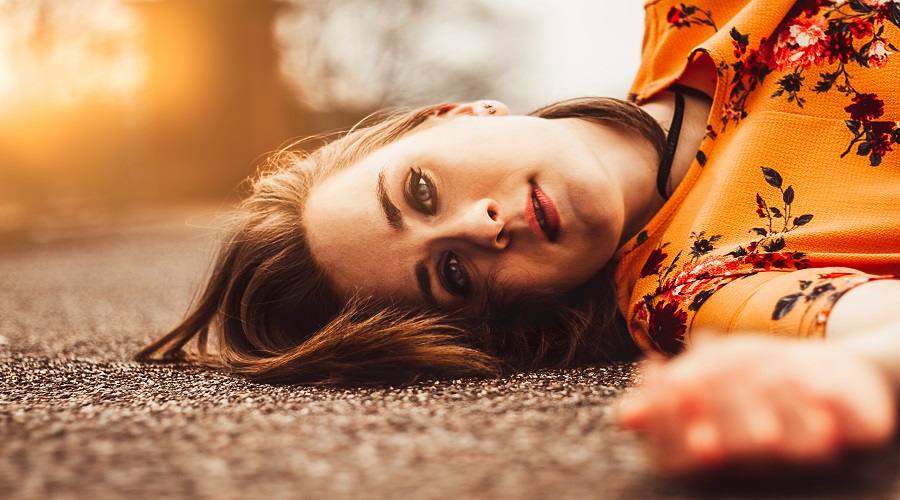Do not Misunderstand Rosacea as a Persistent Itch

Though Rosacea is one of the most common and chronic skin disorder, people often misunderstand it thinking it the acne spots because these spots look like the acne spots. For this misunderstanding, people keep these disorder untreated. But it affects the central parts of the skin of the face. Though it is not the life-threatening disorder, it is a life-altering disorder, because it affects the personal appearance adversely. The National Rosacea Society reported that around 75% of the people have to face uncomfortable feelings in the public and social settings. It affects their self-esteem and even affects their professional career and so, people avoid many social activities.
From the report of the American Academy of Dermatology, it has been found that around 14 million adult people in the US get attacked by the rosacea. For the misunderstanding it as the acne spots or other general skin spots, the rosacea left untreated for a long time and it can increase the sufferings needlessly. So, the spots should be treated clinically as soon as it appears on the skin especially on the facial skin.
Rosacea is characterized by the frequent flushing and interspersed episodes of the inflammation with papules, facial pimples, swelling, and pustules. The symptom starts to arise by the redness on the cheeks, nose, chin, and forehead. This also makes watery, irritated and bloodshot eyes.
People Who have the Probability of Getting Affected Mostly
- Rosacea is common mostly in the eastern and northern Europe.
- Fair-skinned people have the more tendency to get affected, though rosacea can be seen in all skin types. Among fair-skinned people who have the tendency to get a blush or flush often, they are at risk
- Women get affected by rosacea more than men.
- More than 14 million people of the US are affected by the rosacea. It is increasing as baby boomers are entering the target age in developing the rosacea.
Though the number of rosacea patients is high and also increasing, they have very little knowledge about it. They do not like to take treatment as they do not understand the urgency and seriousness of this condition.
Try to Mark Rosacea by the Symptoms
- At the early stage of rosacea, it can often come and vanish with simple flushing which may confuse you. At this stage, redness can occur on the cheeks, nose, forehead, or chin. At the next stage, the permanent redness can be seen on the neck, scalp, ears or on the chest.
- Over time, the redness will be darker and constant if it is left unchecked and untreated. Pimples or bumps can be seen for the appearance of the blood vessels. The noses start to swollen for the excess tissue which is called the rhinophyma. The eyes are also started to feel watery, irritated with the appearance of bloodshot.
- At the severe stage, rough and dry red patches occur which burns and stings. The facial swelling increases and a tight skin is felt on the face.
As the symptoms occur on the skin, the checking and treatment should be started. These symptoms can be moderate to severe.
Reasons Behind the Rosacea
The reasons behind the rosacea are confirmed but the Mainstream Medical Community has made some theories to point the reasons like:
- The oversensitive blood vessels of the facial tissues can be the reason.
- The amount of a disorder known as ‘mites’ which are found in the skin can be the reason.
- The genetical history of the rosacea presence can trigger this condition.
- The connection between the rosacea and a stomach infection created for the pylori bacteria may trigger the severity of this condition.
Treatments for Rosacea
Though there are plenty of treatments for the rosacea, no treatment can cure it completely
- Non-drug Treatments
- Increasing the knowledge and awareness on the severity of the rosacea and taking the necessary steps to minimize the problem as soon as possible.
- Avoidance to aggravate the triggering factors of flushing on the skin.
- Facial massage to reduce edema.
- Be protective under the sun exposure which can increase the severity of rosacea.
- Avoidance of the toners, camphor, menthols, waterproof cosmetics, and other cosmetics containing sodium lauryl sulfate.
- Avoidance of topical steroids.
- The judicious use of cosmetics to improve the condition.
- Medicinal Treatments
Topical medicines
- 75% of the topical metronidazole is helpful at the moderate stage.
- For inflammatory rosacea symptoms, 15% Azelaic acid gel works well as an alternative.
- 1% Ivermectin topical cream works well to damage the parasite at the affected area.
Oral medicines
For the mild to severe rosacea, patients need to take oral medicines to act as anti-inflammatory medicine.
- The most common oral medicine is the preparation of oxytetracycline 500 mg bd, doxycycline 40 mg or od lymecycline 408 mg.
- As an alternative, the erythromycin of 500 mg can be used.
- The combination of oral doxycycline and minocycline with the topical azelaic acid works well to improve the inflammation.
- The isotretinoin can be used occasionally with the doctor’s prescription.
- The 5% brimonidine gel works as the therapeutic agent to target the flushing.
Besides these treatments, the rosacea can be obliterated by the laser treatment. When the rosacea turns to rhinophyma, surgery may be needed as it responds very little to the medicinal treatments. Patients can treat their rosacea by the camouflage treatments too. It is an effective treatment.
Whatever treatment may be needed, it should be done as soon as possible with the doctor’s consent. Early treatment can lessen further severity and sufferings both physical and psychological.





